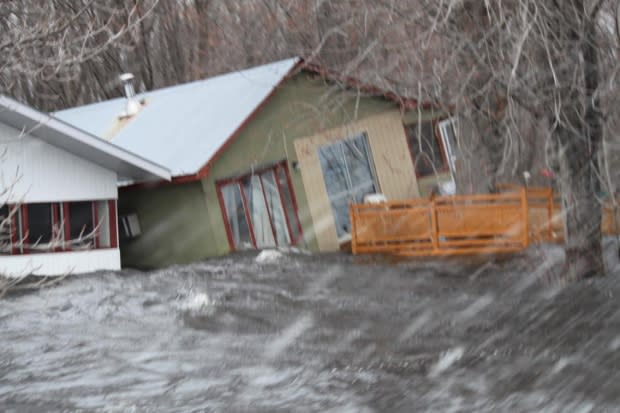No simple solution to Ottawa River flooding
On L'Isle-aux-Allumettes, on the Quebec side of the Ottawa River, cottagers are desperately seeking a solution to the spring flooding that's become a near-annual event here — but they're discovering there are no easy answers.
Their properties are located off Cottage Road on the island's southeast tip, about 150 kilometres west of Ottawa.
Maurice Leger, whose cottage has been in the family for nearly 60 years, is just one of many frustrated cottagers.
'There seems to be general acceptance that the status quo is what we have to live with.' - Maurice Leger
He'd been keeping the rising water at bay with an electric pump until his power was cut off on May 11. It was finally restored Tuesday and has now receded to 30 centimetres above the 2017 high point.
"No one is talking about the solutions," said Leger, whose cottage, along with about 30 others on chemin F, remains accessible only by boat. "There seems to be general acceptance that the status quo is what we have to live with."
One possible solution, Leger believes, is increasing reservoir capacity farther up the Ottawa River to help control rising water levels downstream at places like L'Isle-aux-Allumettes.
"As a layman, I look at that and say, 'Why would we not look at increasing capacity to keep back all that water and release it more slowly? Make the reservoirs bigger.'"
At the same time, Leger, who's also president of the local cottage association, said he's prepared to accept the expert analysis, even if it rules out his idea for financial or environmental reasons.
"If the answer is no, then at least we have an answer to our question," he said.

Idea was studied
Manon Lalonde, executive engineer with the Ottawa River Regulation Planning Board, might have that answer already.
"We already have a lot of reservoirs in the northern part of the watershed," Lalonde explained. "In order to be effective you'd need to put them just upstream of Ottawa or Pembroke, but everyone upstream of that artificial lake would be flooded out and you'd have to move whole communities because it would be a huge lake."
Nor is the topography around Lake Temiskaming, in the northern reaches of the watershed, conducive to building new reservoirs because there are no natural valleys for damming water, Lalonde said.
According to Lalonde, a federal-provincial study conducted in the early 1980s after flooding events in 1974, 1976 and 1979 looked at the feasibility of a new northern reservoir, but the idea was eventually rejected.
Problem flows downstream
Lalonde said the river has been dredged over the years to widen narrows and remove other obstacles, allowing the water to flow more freely downstream.
"But you give that problem to someone else because you are going to flood people outside the watershed like in Montreal," she said. "There is no easy solution."
A Facebook site with nearly 6,000 members is calling for a independent public inquiry into the causes of the repeated flooding, with special consideration to "possible mismanagement of the hydro-electric dams that control water levels along the Ottawa River."
The creators of the page have also sent an open letter outlining their concerns to Prime Minister Justin Trudeau.
Local mayors have joined the call for some kind of investigation, and plan to meet Thursday in Pembroke with members of a provincial task force.

